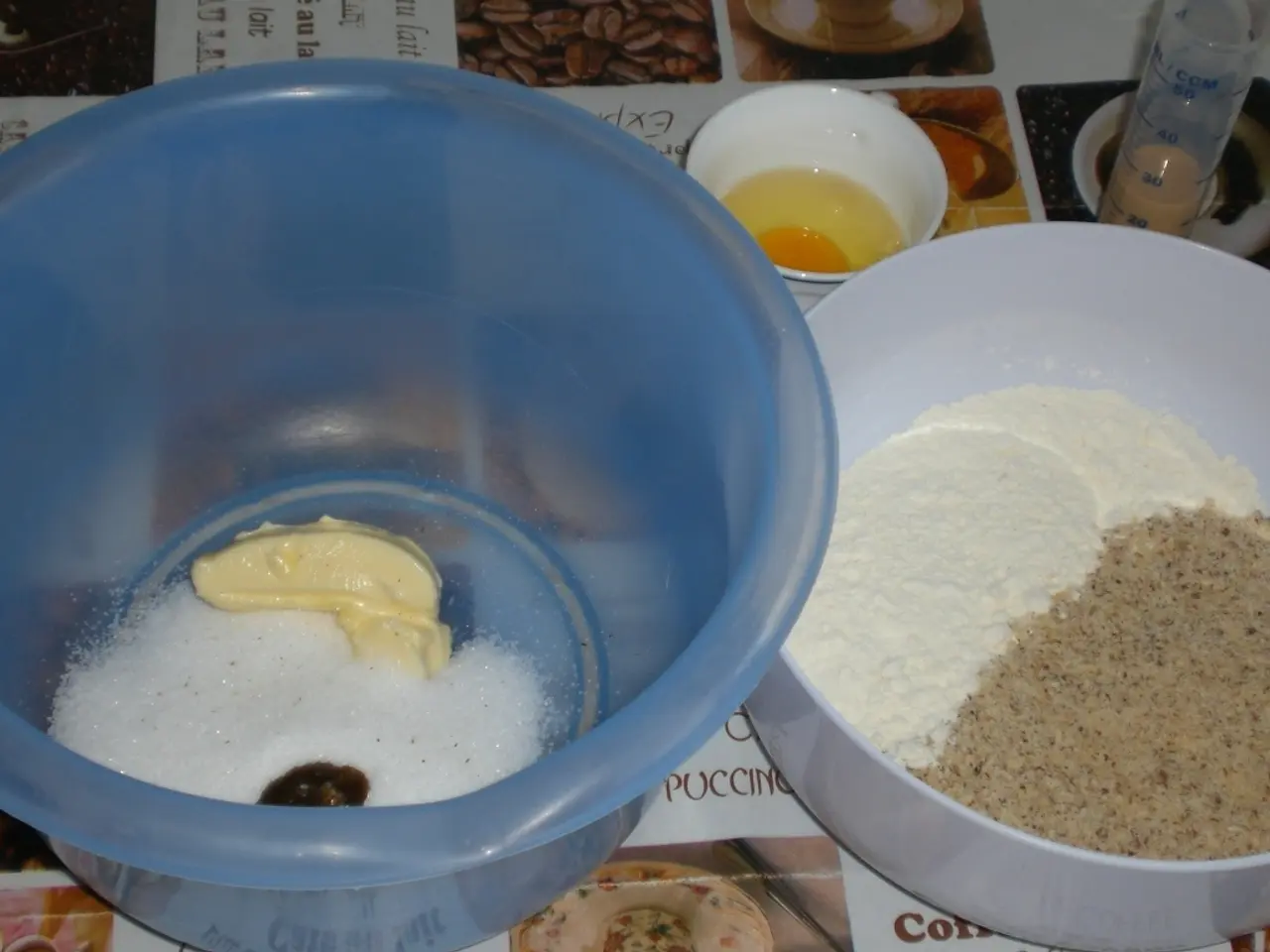Aiding with the Assistance of Flea Shells
Psyllium husk, a common dietary fiber, has been used as a digestive aid for many years. However, it's essential to understand the proper way to consume psyllium husk to avoid potential risks.
The BZfE recommends starting with one teaspoon of ground psyllium husks daily, mixed in 200 milliliters of water. This amount can be gradually increased up to two teaspoons over time. It's important to note that the psyllium drink becomes slimy quickly and should only be allowed to swell for a few minutes.
One key safety measure is to drink plenty of water when consuming psyllium. Not drinking enough fluids can lead to a risk of bowel obstruction. To avoid this, it's advisable to drink at least two liters of water throughout the day.
It's also safer to drink psyllium husks while sitting or standing to allow gravity to help it move towards the digestive tract. The swelling mass of psyllium husks can block the throat if consumed while lying down.
Another safety measure is to avoid taking psyllium husk before bedtime due to reduced fluid intake at night. Additionally, it's safer to take tablets at least half an hour to an hour after psyllium husks to prevent potential interactions.
Psyllium husks can bind to the active ingredients in medications, potentially reducing their absorption. Therefore, it's important to take psyllium several hours apart from medications and consult a healthcare provider before starting psyllium if you are on any medication or have underlying health conditions.
While gastrointestinal symptoms such as bloating, gas, mild stomach cramps, abdominal pain, nausea, diarrhea, and constipation are common when first starting or when increasing fiber intake too rapidly, these symptoms are usually mild and often subside as the body adjusts.
Allergic reactions to psyllium husk are rare but can occur, ranging from mild skin irritation and itching to severe reactions such as swelling of the throat, difficulty breathing, and even anaphylaxis in extreme cases.
To ensure psyllium husk can be used safely as a digestive aid, it's crucial to monitor for any allergic symptoms, start with a low dose and gradually increase it, drink plenty of water, and consult a healthcare professional to manage potential drug interactions.
[1] BZfE. (n.d.). Psyllium. Retrieved from https://www.bzg-gesundheit.de/lebensmittel-und-nahrungserganzungen/lebensmittel/psyllium/ [2] Mayo Clinic. (2020). Psyllium. Retrieved from https://www.mayoclinic.org/drugs-supplements/psyllium/side-effects/nrl-20167589 [3] WebMD. (2021). Psyllium. Retrieved from https://www.webmd.com/vitamins/ai/ingredientmono-943/psyllium-husk [4] NHS. (2019). Psyllium. Retrieved from https://www.nhs.uk/medicines/psyllium/ [5] FDA. (2019). Psyllium. Retrieved from https://www.fda.gov/food/ingredientspackaginglabeling/food-additives/ucm064902.htm
[1] Psyllium husk, a component integral to science and health-and-wellness, is often utilized as a digestive aid due to its fiber content.[2] As suggested by the BZfE, individuals new to psyllium husk consumption should start with one teaspoon daily, gradually increasing to two teaspoons over time.[3] Science and fitness-and-exercise are intertwined, and maintaining hydration is essential when incorporating the slimy psyllium drink into health regimens, with two liters of water recommended daily.[4] Safety measures in health-and-wellness might also advise against consuming psyllium husks while lying down to prevent throat blockage, and avoid taking tablets immediately after consumption to mitigate potential interactions.[5] According to nutritional sources, psyllium husks may bind to medication, leading to reduced absorption, necessitating careful consideration and conversation with healthcare professionals regarding drug interactions.




